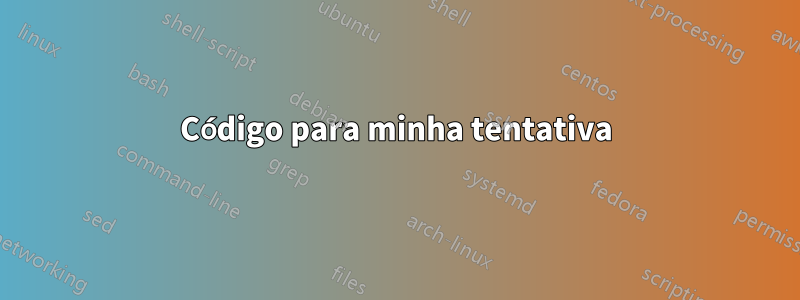
Estou tentando desenhar o seguinte "fluxograma"
Depois de algumas brincadeiras, consegui encontrar a seguinte solução
O que estou enfrentando se resume principalmente a duas coisas
- Como posso alinhar as setas para que atinjam as caixas em ângulos retos? Agora eu adivinhei e calculei onde colocá-los.
- Existe uma maneira fácil de obter setas grossas conforme exibidas na imagem?
Quaisquer soluções alternativas para obter a imagem desejada são bem-vindas como sempre.
Código para minha tentativa
\documentclass{article}
\usepackage{xcolor}
\definecolor{UiT-main}{HTML}{003349}
\definecolor{UiT-red}{HTML}{CB333B}
\definecolor{UiT-blue}{HTML}{007396}
\definecolor{UiT-cyan}{HTML}{59BEC9}
\definecolor{UiT-orange}{HTML}{F2A900}
\usepackage{tikz}
\usetikzlibrary{shapes,arrows,calc}
% Define block styles
\tikzstyle{sun} = [circle,minimum height=0.6cm, draw, fill=UiT-orange,
text width=4.5em, text badly centered, node distance=3cm, inner sep=0pt]
\tikzstyle{sunEmpty} = [circle,minimum height=0.6cm,
text width=4.5em, text badly centered, node distance=3cm, inner sep=0pt]
\tikzstyle{block} = [rectangle, draw, fill=green!20,
text width=20em, text centered, minimum height=4em]
\tikzstyle{line} = [draw, -latex']
\begin{document}
\begin{tikzpicture}[node distance = 2cm, auto]
% Place nodes
\node [sun] (Sun) {Sun};
\node [sunEmpty,right of=Sun] (SunEmpty) {};
\node [block, right of=Sun, yshift=-2cm] (greenhouse) {Greenhouse layer};
\node [block, fill=black!20, below of=greenhouse, yshift=-2cm] (surface) {surface};
% Draw edges
\path [line] (Sun) -- node {}($(surface.north west)!0.23!(surface.north east)$);
\path [line,shorten <=0.25cm,shorten >=0.25cm] (surface) -- node {}(greenhouse);
\path [line] ($(greenhouse.north west)!0.64!(greenhouse.north east)$) -- node {}(SunEmpty.north);
\end{tikzpicture}
\end{document}
Responder1
Como posso alinhar as setas para que atinjam as caixas em ângulos retos? Agora eu adivinhei e calculei onde colocá-los.
A coordenada (surface.north-|sun)terá o valor da coordenada x sune o valor da coordenada y de surface.north. Então o pathabaixo estará atingindo a caixa ( surface) em ângulo reto
\path (Sun) -- (surface.north-|Sun);
Existe uma maneira fácil de obter setas grossas conforme exibidas na imagem?
Aumentar line width.
Além disso, ajustei o outer sepof nodes para que as setas não toquem nos nós.

MWE
\documentclass[margin=3mm]{standalone}
\usepackage{xcolor}
\usepackage{tikz}
\definecolor{UiT-main}{HTML}{003349}
\definecolor{UiT-red}{HTML}{CB333B}
\definecolor{UiT-blue}{HTML}{007396}
\definecolor{UiT-cyan}{HTML}{59BEC9}
\definecolor{UiT-orange}{HTML}{F2A900}
% Define block styles
\tikzset{sunEmpty/.style={circle,minimum height=0.6cm,
text width=4.5em, text badly centered, node distance=3cm, inner sep=0pt, outer sep=1mm},
sun/.style={sunEmpty,draw,fill=UiT-orange},
block/.style={rectangle, draw, fill=green!20,
text width=20em, text centered, minimum height=4em, outer sep=1mm},
line/.style={-latex, line width=1.8mm, draw=blue!40}}
\begin{document}
\begin{tikzpicture}[node distance = 2cm, auto]
% Place nodes
\node [sun] (Sun) {Sun};
\node [sunEmpty,right of=Sun] (SunEmpty) {};
\node [block, right of=Sun, yshift=-2cm] (greenhouse) {Greenhouse layer};
\node [block, fill=black!20, below of=greenhouse, yshift=-2cm] (surface) {surface};
% Draw edges
\path [line,UiT-orange] (Sun) -- (surface.north-|Sun);
\path [line] (surface) -- (greenhouse);
\path [line] (greenhouse.north-|SunEmpty) -- (SunEmpty.north);
\end{tikzpicture}
\end{document}
EDIT - Uma versão melhor (graças ausuário121799)
\documentclass[margin=3mm,tikz]{standalone}
\usetikzlibrary{shapes.arrows,calc,shadows.blur,positioning}
\definecolor{UiT-main}{HTML}{003349}
\definecolor{UiT-red}{HTML}{CB333B}
\definecolor{UiT-blue}{HTML}{007396}
\definecolor{UiT-cyan}{HTML}{59BEC9}
\definecolor{UiT-orange}{HTML}{F2A900}
% Define block styles
\tikzset{sun/.style={circle,minimum height=0.6cm, draw, fill=UiT-orange,
text width=4.5em, text badly centered, node distance=3cm, inner sep=0pt, outer
sep=1mm},
sunEmpty/.style={circle,minimum height=0.6cm,
text width=4.5em, text badly centered, node distance=3cm, inner sep=0pt, outer
sep=1mm},
block/.style={rectangle, draw, fill=green!20,
text width=20em, text centered, minimum height=4em, outer sep=1mm},
line/.style={-latex, double arrow, line width=1.8mm, draw=blue!40}}
\begin{document}
\begin{tikzpicture}[node distance = 2cm, auto,
fat arrow/.style={% https://tex.stackexchange.com/a/432147/121799
to path={
let \p1 = ($(\tikztotarget)-(\tikztostart)$),
\n1 = {int(mod(scalar(atan2(\y1,\x1))+360, 360))}, % calculate angle in range [0,360)
\n2 = {veclen(\x1,\y1)}
in
-- (\tikztotarget)
node[inner xsep=0pt,inner ysep=5pt, % use inner ysep to set width
minimum height=\n2-\pgflinewidth,
single arrow,midway,sloped,anchor=center,
#1 % arguments passed to fat arrow added here
] {} \tikztonodes}
},
fat arrow/.default=, % empty default for argument of fat arrow
pft/.style={single arrow,draw=blue,blur
shadow,xshift=-2pt,minimum width=10mm, single arrow head extend=.2cm }
]
% Place nodes
\node [sun,blur shadow] (Sun) {Sun};
\node [sunEmpty,right=2.2cm of Sun] (SunEmpty) {};
\node [block, right of=Sun, yshift=-2cm,blur shadow,rounded corners=2pt] (greenhouse) {Greenhouse layer};
\node [block, fill=black!20, below of=greenhouse, yshift=-2cm,blur shadow,rounded corners=2pt] (surface) {surface};
% Draw edges
\path [fat arrow={pft,top color=UiT-orange!80,bottom color=UiT-orange}]
(Sun.south) to (surface.north-|Sun) ;
\path [fat arrow={pft,top color=blue!20,bottom color=blue!40}]
(surface.north) to (greenhouse.south);
\path [fat arrow={pft,top color=blue!20,bottom color=blue!40,minimum width=5mm}]
(greenhouse.north-|SunEmpty) to (SunEmpty.north);
\path [fat arrow={pft,top color=blue!20,bottom color=blue!40,minimum width=5mm}]
(greenhouse.south-|SunEmpty) to (surface.north-|SunEmpty);
\end{tikzpicture}
\end{document}





